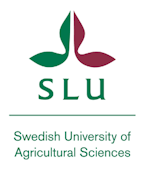My research focuses on the development of technologies to recycle plant nutrients from the city back to the agricultural fields in an efficient and safe way. I do this mainly within three research areas: hygiene technology, protein production from waste, and rediverting plant nutrients away from sewage systems.
Hygiene technology is an area that we work with in all parts of the research as there is potential risk spreading infection when we recycle plant nutrients. We work with several different treatment techniques for sanitisation; the main technology we have been developing over the last 15 years is ammonia-based sanitisation. The technology has evolved from a general idea to an accepted technique used in the single-use toilet, Peepoo, where you treat from 50 grams of material in a bag, to large scale toilet water treatment, where up to 1,000 cubic meters of toilet water are treated.
Protein production from waste is mainly produced by fly larva composting and vermicomposting. In Sweden, we have focused on fly larvae composting where the fly larvae consume the food waste. The larvae are then used as feed in the production of fish and poultry, where it can replace the protein and fat in soy and fishmeal. Today we have a partnership with Eskilstuna and Strängnäs Energy and Environment, where we have developed a plant for processing the waste at full scale.
Source separating sanitation focus on the household's most nutrient rich fraction, the toilet waste. We are working to with different methods to hygienize the toilet waste in a simple way to then return it as a fertilizer. Currently, we have full-scale projects in cooperation with Uddevalla municipality and Västvatten, Sweden.In development is urine drying, where we chemically stabilize the urine and then dry the urine using the bathroom's ventilation. In this way, urine can produce a dry concentrated fertilizer that has plant nutrient concentrations similar to commercial mineral fertilizer (more than 15% nitrogen).
Experience
-
–presentProfessor, Swedish University of Agricultural Sciences
Education
-
2002Swedish University of Agricultrual Sciences, PhD / Technology
- Uppsala, Sweden
- Website
- Article Feed
- Joined


